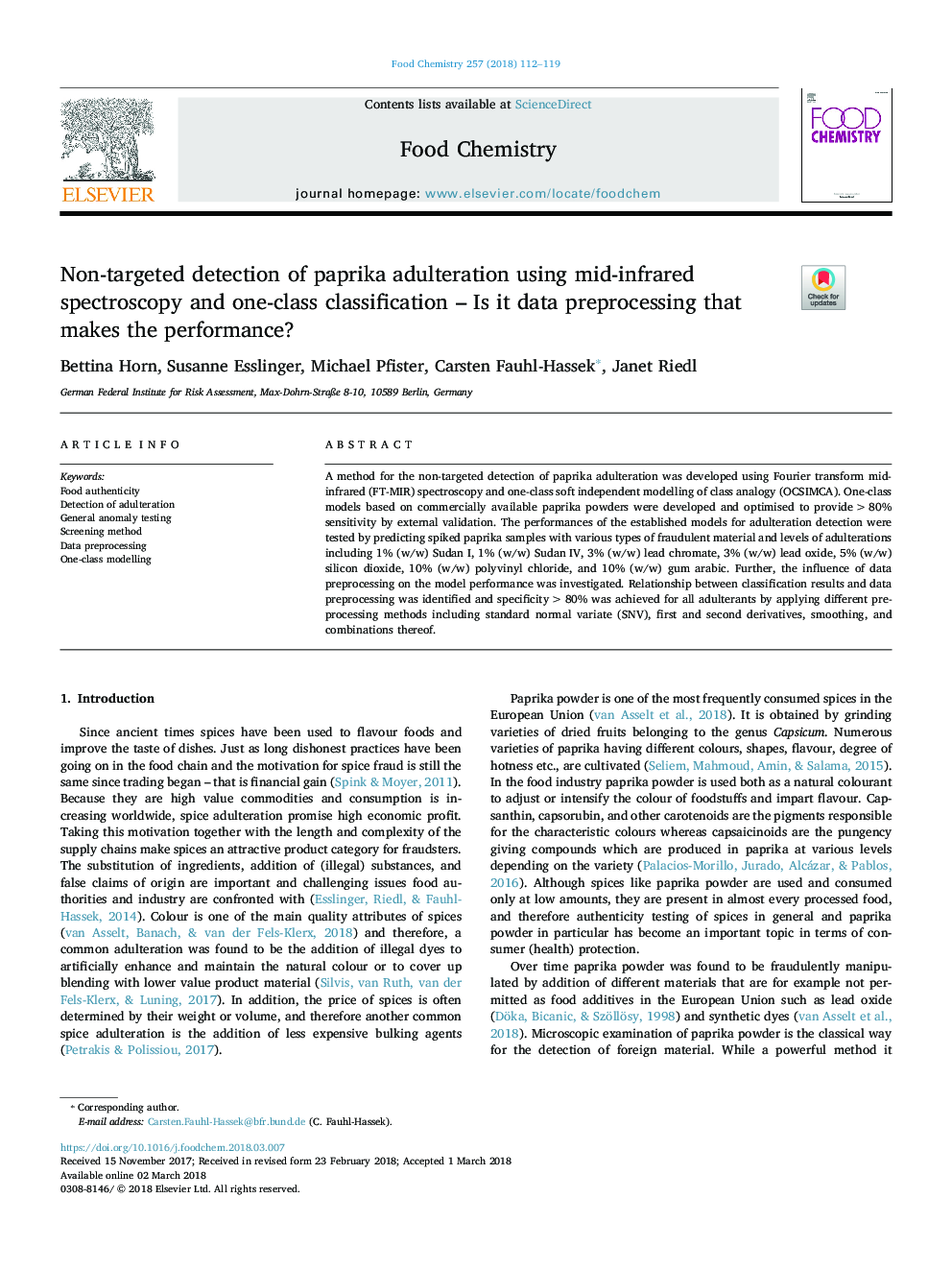| Article ID | Journal | Published Year | Pages | File Type |
|---|---|---|---|---|
| 7585184 | Food Chemistry | 2018 | 8 Pages |
Abstract
A method for the non-targeted detection of paprika adulteration was developed using Fourier transform mid-infrared (FT-MIR) spectroscopy and one-class soft independent modelling of class analogy (OCSIMCA). One-class models based on commercially available paprika powders were developed and optimised to provide >80% sensitivity by external validation. The performances of the established models for adulteration detection were tested by predicting spiked paprika samples with various types of fraudulent material and levels of adulterations including 1% (w/w) Sudan I, 1% (w/w) Sudan IV, 3% (w/w) lead chromate, 3% (w/w) lead oxide, 5% (w/w) silicon dioxide, 10% (w/w) polyvinyl chloride, and 10% (w/w) gum arabic. Further, the influence of data preprocessing on the model performance was investigated. Relationship between classification results and data preprocessing was identified and specificity >80% was achieved for all adulterants by applying different preprocessing methods including standard normal variate (SNV), first and second derivatives, smoothing, and combinations thereof.
Related Topics
Physical Sciences and Engineering
Chemistry
Analytical Chemistry
Authors
Bettina Horn, Susanne Esslinger, Michael Pfister, Carsten Fauhl-Hassek, Janet Riedl,
